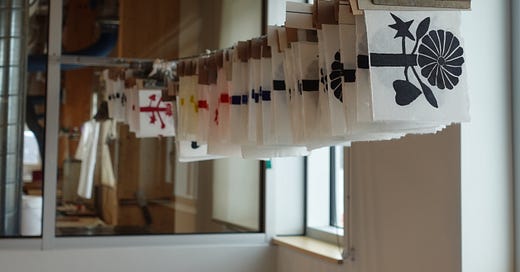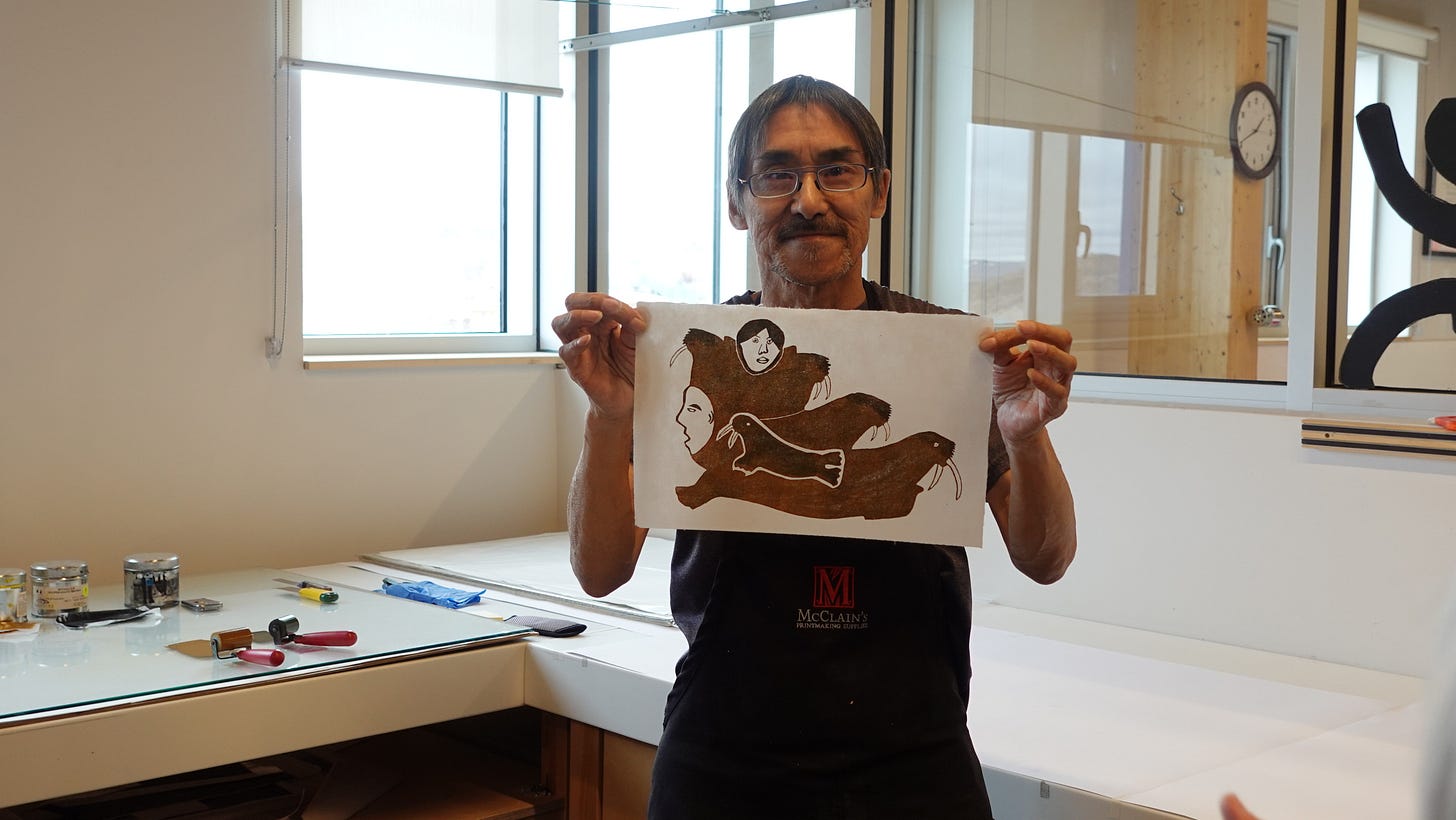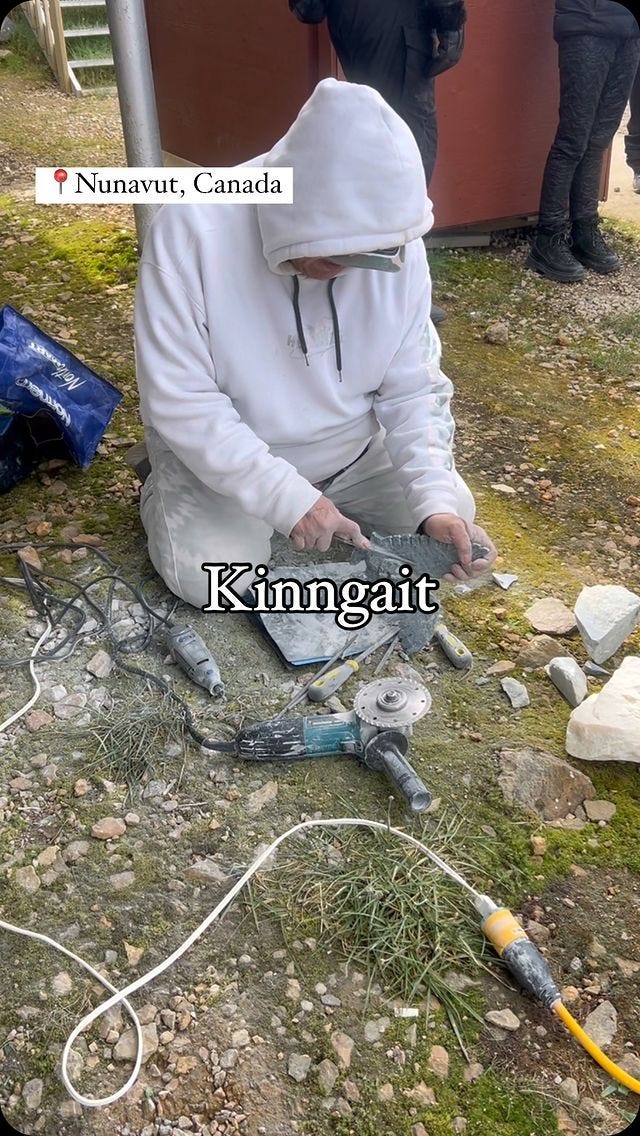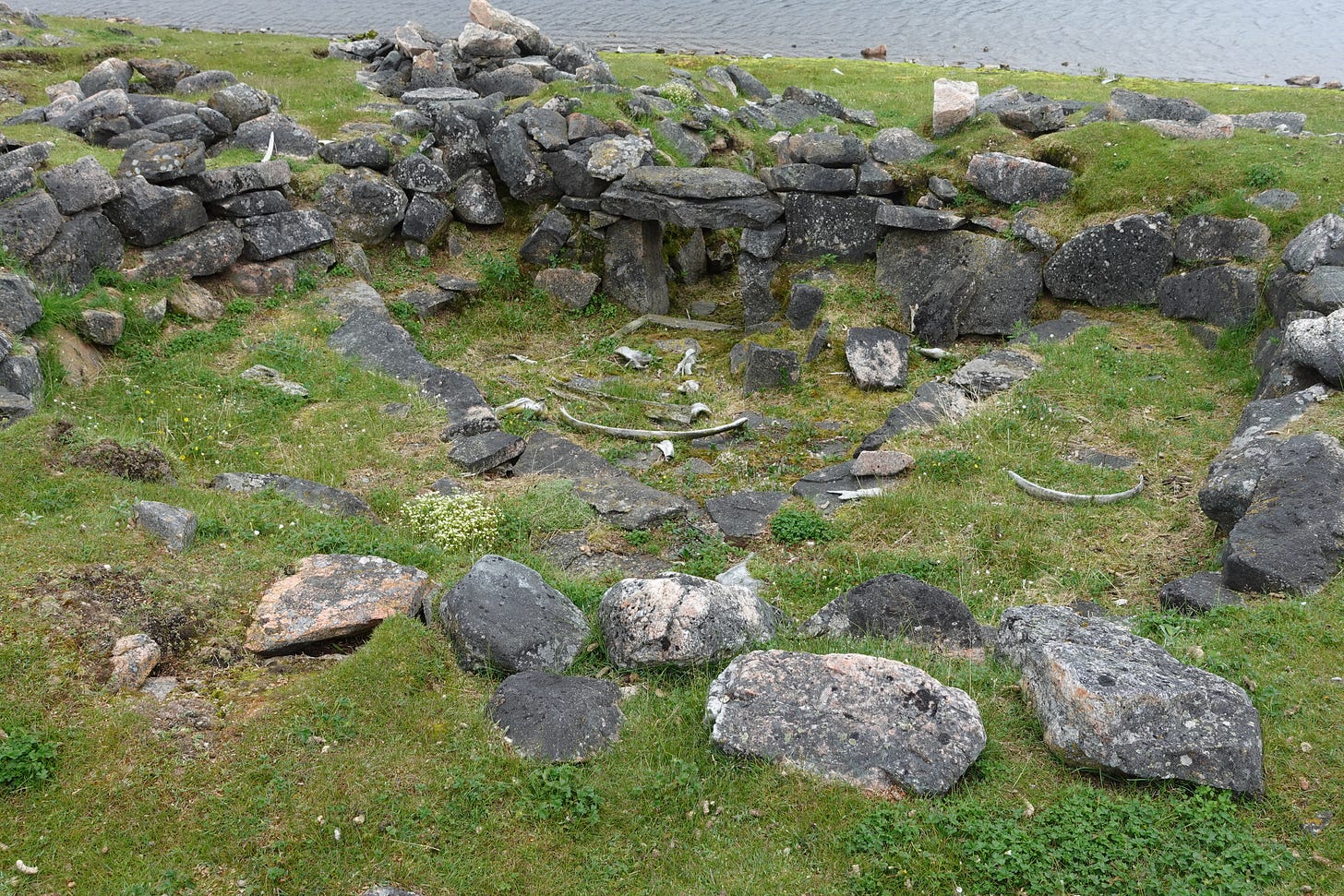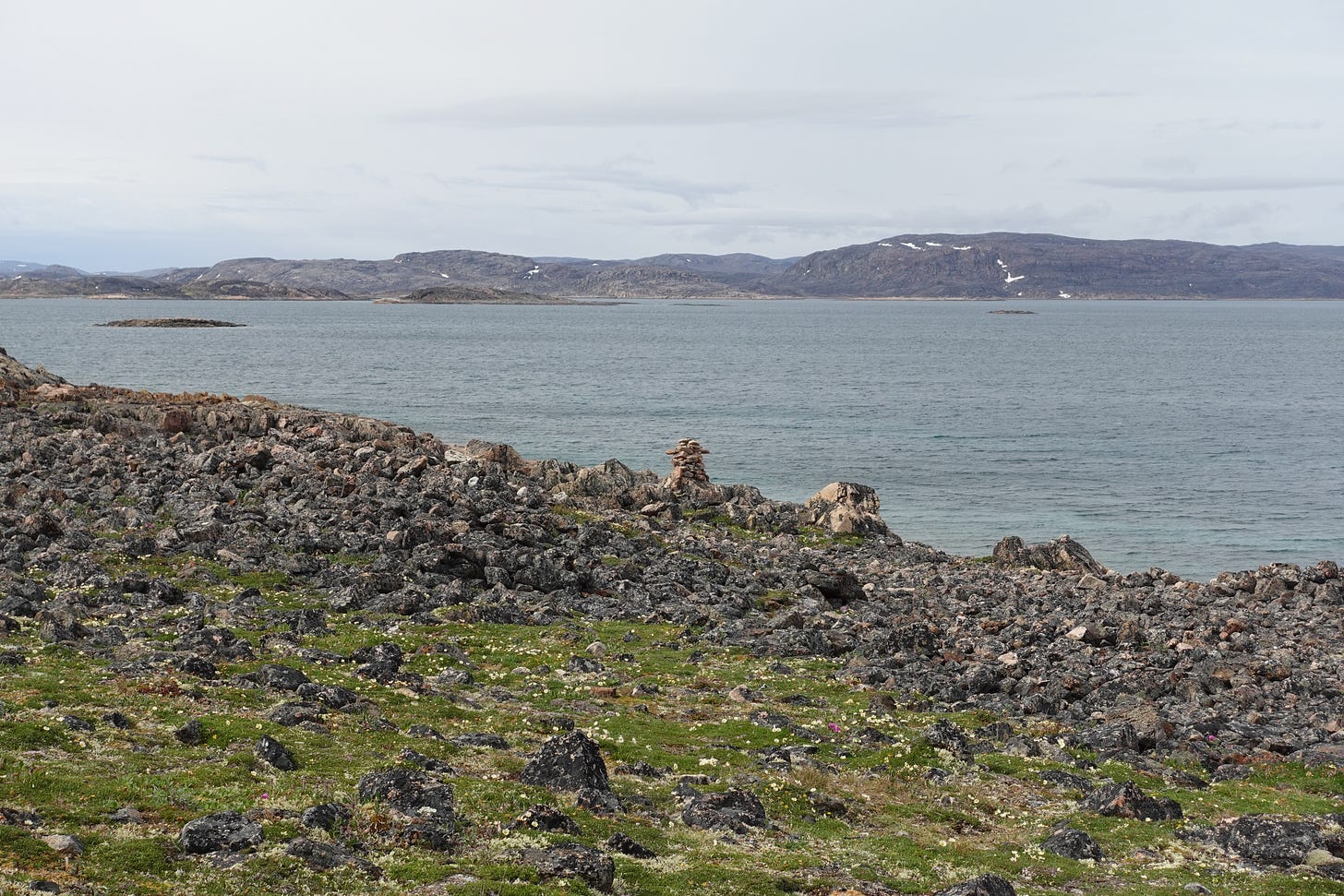Kinngait – capital of Inuit art
Kinngait means “many hilltops.” It used to be known as Cape Dorset, but now is commonly called by its original Inuktitut name. Kinngait is also called the Capital of Inuit Art. In fact, 22% of the workforce is engaged in the arts. Many Heart of the Arctic passengers chose this Adventure Canada itinerary because of this particular stop, as it is the home of Inuit printmaking—a very well-known and coveted art form.
The Kenojuak Cultural Centre and Print Shop brought us into the studio where the artists work. We got a quick demonstration of how the ink is rolled onto the design, and then pressed carefully and evenly onto paper with the back of a spoon tool.
On board the Ocean Endeavor, we were actually really lucky to have John Houston—Inuit Art Specialist, filmmaker, and speaker—as an expedition team member. His father, James Houston, was one of the original founders of printmaking in Kinngait. Just meeting and getting to know John was lovely; he is an incredible storyteller and a remarkably kind human.
KINNGAIT
Long rectangle of soapstone
Run hand over grooves
an eye, an ear,
a long snout
fur and hair.
Press, roll
ink black like the bottom of the sea
ink orange like the whispering flame
ink pink like the caribou tongue
ink silver like the beluga skin
ink purple like the midnight sun
Press, roll
layer over layer
an eye, an ear,
a long snout
fur and hair.
The woman in the wolf
under a summer sky
quiet as a whispering flame
tongues like caribou
breath of life inside soapstone
oxygen a rainbow.Outside the print shop, a stone carver smoothed away at marble. His hands were coated with a layer of the rock debris. It was clear from the grooved inlets making up two large wings that his subject was an owl. These stone carvings are commonly found in Nunavut. I personally found joy in a dancing polar bear and a tilted owl in flight, so I bought each and packed them up for my journey home as a reminder of the absolute expertise of these Inuit artists.
A short ride across the water, and our group disembarked on the sandy beach shores of Malijuaq Territorial Park. This is the site of Thule winter homes. The Thule lived in the Canadian Arctic and Greenland during the years of around 900 to 1700 AD. The Thule would dig into the ground, laying stones around the deeply carved out circles of land, to make the structure. As whale hunters, they would use the bones to construct walls and roofs that kept them protected from the elements all winter long. You can still see the whale bones in the image below.
Crossing over a hill with soft moss and fields of flowers, we came upon two prominent piles of stone in the distance. One was an Inuksuk, a human-like figure built frequently to guide passing travelers. The other was most likely used as a qajaq (kayak) stand, which keeps sled dogs away from the qajaqs made of animal bones and skins.
At this point, the tide began to quickly pull the water away from shore. The beach was expanding at an alarming rate, and our expedition leaders calmly, but urgently, commanded us to get our wet gear on so we could leave before we were stuck on the land. We waded farther, and farther, out into the water, which made it more and more difficult to board the zodiacs. The team worked together to push the heavy vessels out onto sea as rapidly as possible.
I stayed behind to let others go ahead. The last of 4 passengers, the team looked at us and asked, “You alright to get wet?” It didn’t seem like we had a choice. We waded out into the water far enough to (literally) jump into the zodiac. Adventure Canada keeps us as dry as possible, with step stools and plenty of helping hands, but this was a quick getaway—a race against the tide. The cold water rushed into my boots, my socks soaked, my toes dredged in the cold arctic waters.
The winds were picking up as the night went on, and the later it got, the splashier the ride was. But the good spirit of the people on our zodiac made it all a great adventure. As we pulled in to get back on board the Ocean Endeavor, our driver led us in a round of the chorus from “Take Me Home Country Road.” We proceeded to dump the water from inside our boots before running to our cabins to dry off and eat supper.
Back on the ship, a few local friends came for a presentation. An Elder of the Kinngait community pulled out objects from her past: string games, dolls, a slingshot, common tools, and more. Pulling a certain string taught, she asked, “Will the ship sail through rough waters?” She began to sing a song, twisting the loop with each turn of a phrase. After twisting it back with a “reverse song,” the string was not completely untangled—a sign of bad news for the Ocean Endeavor. When they were young, she said, they believed in these prediction games and asked these kinds of questions all the time.
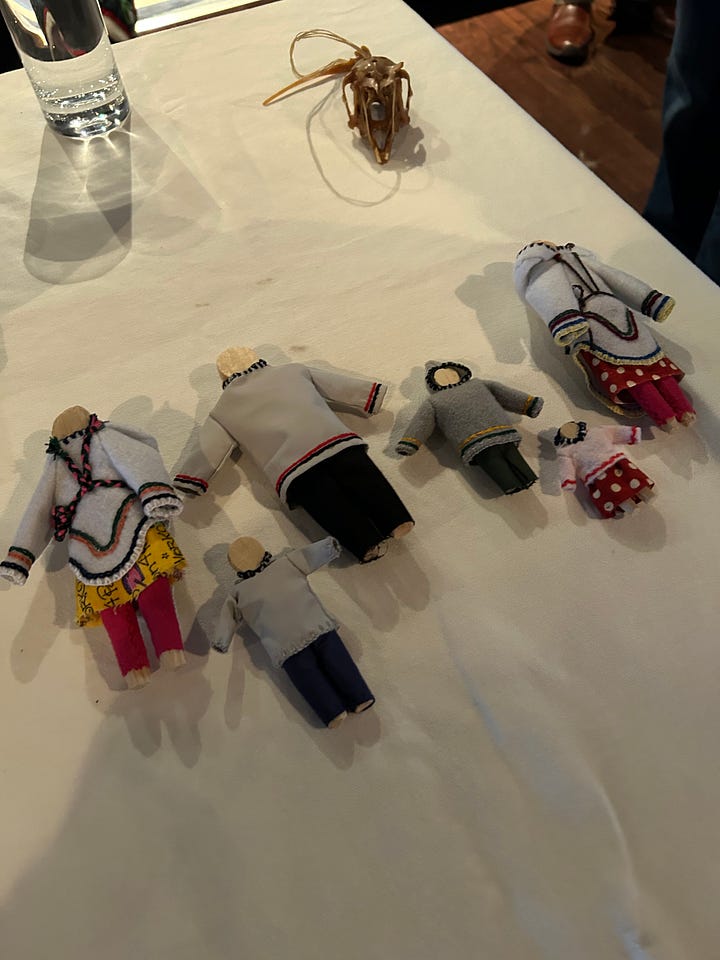
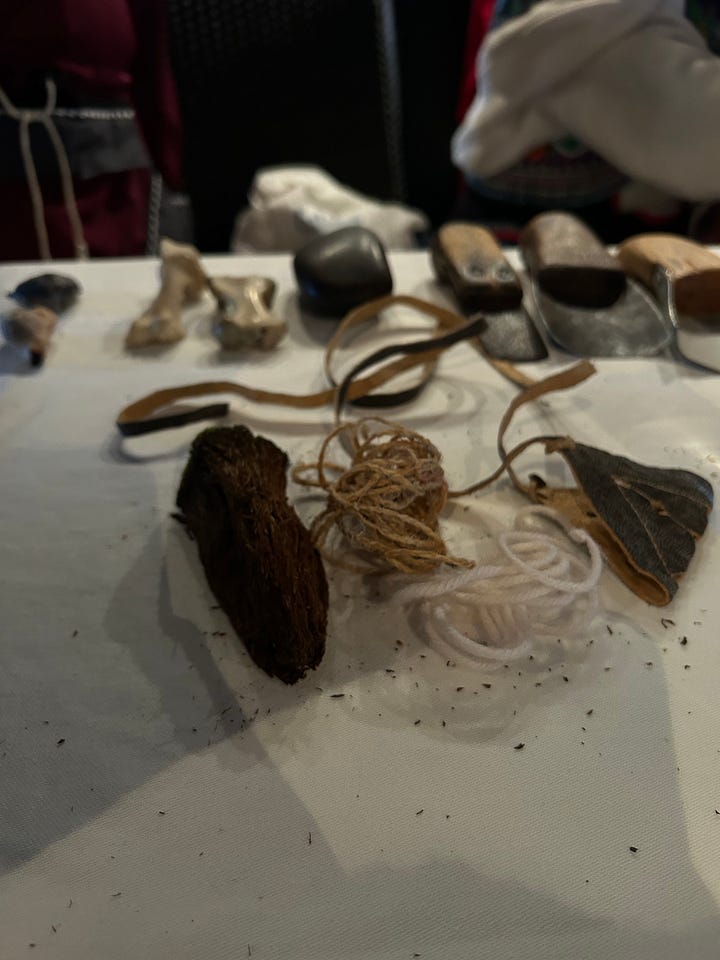
Two young women performed a few traditional throat singing pieces, as well. One thing I found really interesting was that it is also a game. One person is the leader, the other is the follower. As they perform the song, they try to make the other laugh. The one who breaks first loses. It was a beautiful interaction to witness between the two.
As I headed off to bed, I wondered if the prediction game was correct about what was ahead of us out on the water…


